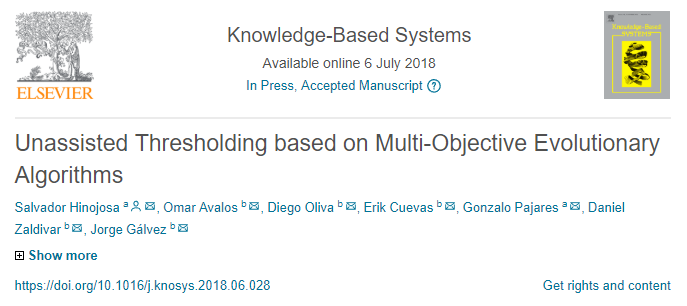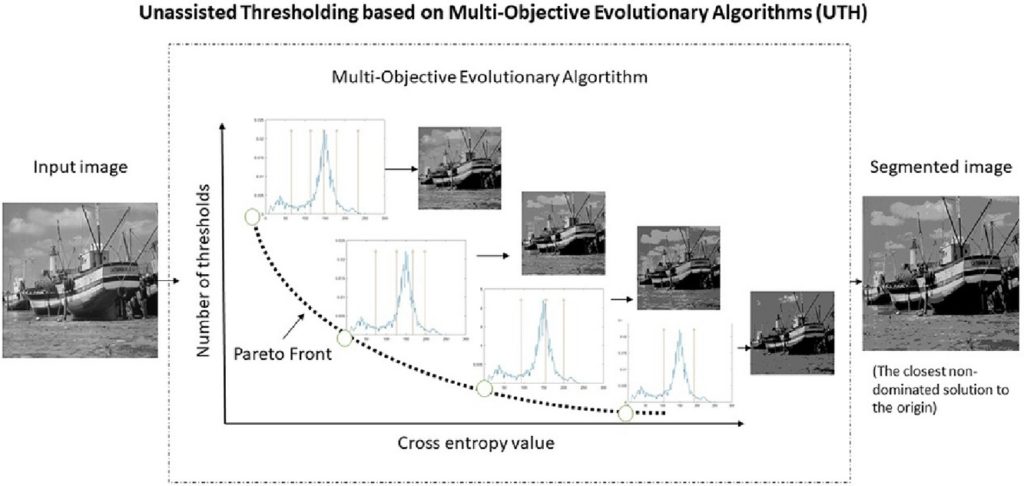Unassisted Thresholding based on Multi-Objective Evolutionary Algorithms
Multi-Objective Evolutionary Algorithms (MOEAs) are known to solve problems where two or more conflicting goals are involved. To accomplish it, MOEAs incorporate strategies to determinate optimal trade-offs between each of the objective functions. In this paper, an Unassisted image Thresholding (UTH) methodology is proposed based on MOEAs. UTH takes advantage of the trade-off mechanisms present on MOEAs to perform the image thresholding while simultaneously determinating the number thresholds required to segment each image and the best placement of each threshold along the histogram of the image. The image thresholding problem is commonly addressed as the search for the best possible thresholds able to partition a given image into a finite number of homogeneous classes. Such approach requires the assistance of a designer to determinate the number of threshold values that will properly segment the image. However, as images can vary significantly, the definition of an optimal number of thresholds should be performed for each image. Thus, a methodology able to determinate both the number of thresholds and the best placement of each value contributes to a general segmentation scheme. In the proposed approach, UTH redefines the thresholding problem as a Multi-Objective task with two conflicting goals. The first goal is the quality of the segmented image, and it is computed as a non-parametric criteria to evaluate candidate threshold points. The second goal is the normalized number of threshold points. Since the number of thresholds is not fixed, a particle encoding the thresholds with variable length is used. The strategy of UTH is coupled with three MOEAs namely NSGA-III, PESA-II and MOPSO using as the non-parametric criteria the Cross Entropy. According to the results, the UTH-NSGA-III formulation outperforms UTH-PESA-II and UTH-MOPSO regarding convergence and quality of the resulting image.

